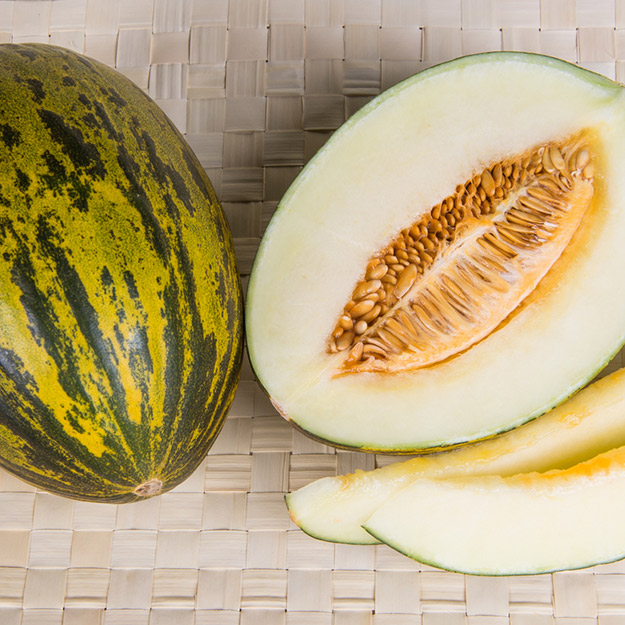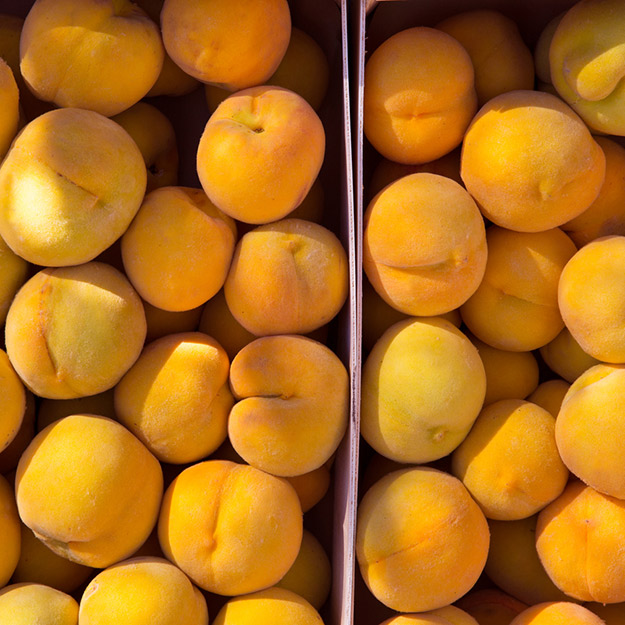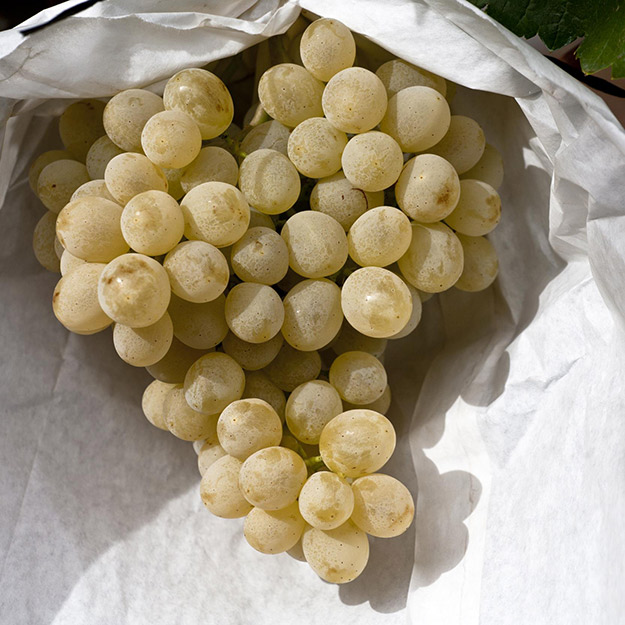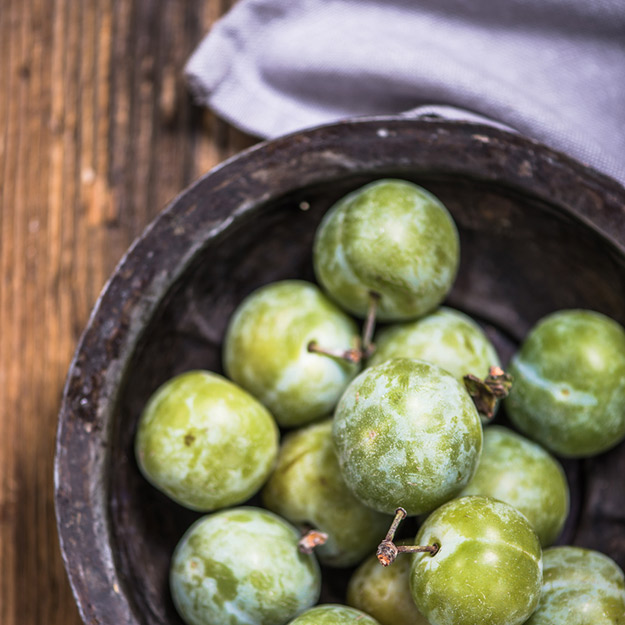.png.transform/rendition-xs/image_image%20(1).png)
Spanish Fruits For a Sweet End To Summer
Freshness and hydration. These are two of the qualities that form the sensory map of summer fruit. Spain’s idyllic climate means that the feeling of summer can be made to linger until well into the month of October – particularly thanks to the production of certain varieties of quality melons, peaches and plums. The final weeks of October also give consumers the chance to combine the last fruits of the Spanish summer with the first crops of autumn, heralding the perfect moment for fruit-lovers.
Text: Rodrigo García Fernández/®ICEX.

One of the most-renowned experts in this field is Luis Pacheco, the owner of the Gold Gourmet fruit and vegetables markets in Madrid. In his opinion, “it’s impossible to understand our summers without Spanish melon and watermelon, and the late harvest season of these fruits allows us to relish in their sweetness and refreshing qualities until nearly November.”
Spain is the number one producer and exporter of melons in Europe. Among the numerous types of melons grown here (Tochet, Amarillo, Galia...), there is one that takes first prize in terms of commercial success for consumers: Piel de sapo (also known as the Santa Claus or Christmas melon), which is primarily cultivated in the Torre Pacheco area of Murcia and in the province of Ciudad Real (Castile-La Mancha). According to the Asociación de Productores-Exportadores de Frutas y Hortalizas de la Región de Murcia (PROEXPORT), 45% of total Spanish melon exports – approximately 380,000 tons – come from Murcia.
The southeastern part of the Peninsula is also an excellent place for growing another summer fruit that can still be found in markets in early autumn: watermelon. Murcia, Almería and the Valencian Community comprise the largest area dedicated to this crop, of which Spain is the tenth biggest exporter in the world – clearly dominating European markets. ANECOOP is an association made up of twenty-eight cooperatives dedicated to the cultivation and sale of this juicy fruit, and it has been the main source of watermelons for numerous European countries for the past twenty years.
The flavor of the Calanda peach

Luis Pacheco is very clear when it comes to these fruits: “It is impossible to talk about late summer fruits without stopping (to discuss) two essential products from our culinary culture: Calanda peaches and table grapes.”
Calanda peaches are an ideal example of a fruit with which we bid farewell to the beloved summer and mark the arrival of the aromatic autumn. The core of their season lasts approximately throughout the month of September and during a large part of October. In contrast to other peaches (like the Cieza peaches from Murcia), the wait for these tasty peaches – which are famed for their characteristic aroma and velvety skin – is just a little bit longer
The Calanda peach (melocotón de Calanda) is the only Spanish peach inscribed in the European Union registry of protected designations of origin. Of the Amarillo Tardío peach variety, these fruits are valued for their texture, aroma, sweetness and size. Curiously, in the most critical growth moment – while ripening on the tree – the crop is subjected to a singular practice: each individual peach is wrapped in a paper bag to keep the dust, rain and insects off of it.
Sweetness on the vine. Spanish table grape

This same growing technique is used on another of the summer’s late-harvest fruits: table grapes. Spain ranks high in terms of the cultivation of this crop in Europe, and one of the areas where Spanish table grapes are treated with special care is in Novelda and the Vinalopó Valley in the Valencian Community. There are three grape varieties accepted by the Regulatory Council of Protected Designation of Origin Uva de Mesa embolsada Vinalopó: Aledo, Ideal (Italy) and Rosetti.
The wrapping of each bunch of grapes has three main advantages: it yields a uniform and clean color, produces a softer and thinner peel, and provides protection from external factors.
There are other areas in Spain dedicated to growing table grapes. The Moscatel de Alejandría variety of grapes grown in Málaga are wonderfully flavorful, with a marked sweetness. One of the most traditional production zones for this variety is the beautiful area of Axarquía. For those in search of culinary treasures, some fruit markets still offer their customers Albillo and Garnacha variety table grapes, grown in the foothills of the Sierra de Gredos mountains.
Other fruits to say goodbye to the Summer

There are still plenty of other fruits around on these dates that can leave us feeling happily sated. One of these is the paraguayo, a little-known fruit three decades ago amongst Spanish consumers, but one that has experienced an interesting evolution in the last five to ten years. Another companion on our journey from summer into fall are the suggestive Claudia plums – small in size but big in flavor.
We still have time to enjoy the season’s last pears – of the Ercolini variety – or the last figs of summer.
Soon the pomegranates, chirimoya (apple custard), kakis (persimmons) and apples of fall will be here, leading the way to cooler temperatures, different aromas, and other months on the calendar.
Translation: Adrienne Smith/®ICEX.


